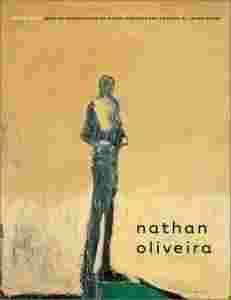|
 |
Autor: Peter Selz
Wydawnictwo: University of California Press
Data wydania: 20 Mar 2002
Ilość stron: 256
Wymiary książki: 2.5 x 21.3 x 27.5 cm
Rodzaj okładki: Paperback
ISBN-13: 978-[zasłonięte][zasłonięte]02310
978-[zasłonięte][zasłonięte]02310A
Nathan Oliveira's (1928 - 2010) passion for continuing an inner-directed artistic tradition attached to the human subject persisted throughout his more than forty years as a painter and master printmaker. His art represents an ongoing dialogue with artists from Rembrandt to Goya to Munch, Beckmann, Giacometti, and de Kooning - whom he recognized for their insights into the human condition. The human touch, so often absent in contemporary work, is distinct in Oliveira's art. His paintings and monotypes bear the mark of his brush in the tactile quality of the paint and the unique printed surfaces of his monotypes. He lived and worked in the San Francisco Bay Area, where he was professor emeritus of art at Stanford University, Oliveira is widely regarded as a key figure in American art, and his paintings, monoprints, drawings, watercolors, and sculpture have attracted an international audience. This book is the most comprehensive study to date of Oliveira's career as artist and teacher. Generously illustrated with 172 images, more than 100 in color, and including valuable, previously unpublished biographical and bibliographical information, Nathan Oliveira accompanied the major traveling exhibition of the same name. Peter Selz's authoritative text weaves key moments in Oliveira's professional life together with compelling readings of the paintings themselves. Selz, who curated the exhibition, succeeds brilliantly in establishing a sense of where Oliveira came from, what inspired him, and how he thought of himself as an artist. Selz discusses Oliveira's beginnings as the son of Portuguese immigrants, his early exposure to Bay Area artists, and his formative experience of studying with Max Beckmann. Selz also traces the artist's affinity to his older contemporaries, his search for an expressive relationship between form and space that found resonance in presentation of the single figure, and the exhibitions and collaborations that shaped his career. Susan Landauer's introduction provides an overview of the artist's work, while Joann Moser considers Oliveira's prints and drawings. Gary Carson's chronology, bibliography, and list of Oliveira's solo exhibitions complete this landmark publication, which fills an important gap in bringing Oliveira's powerful paintings and prints to the attention of a much larger public.
|
|

